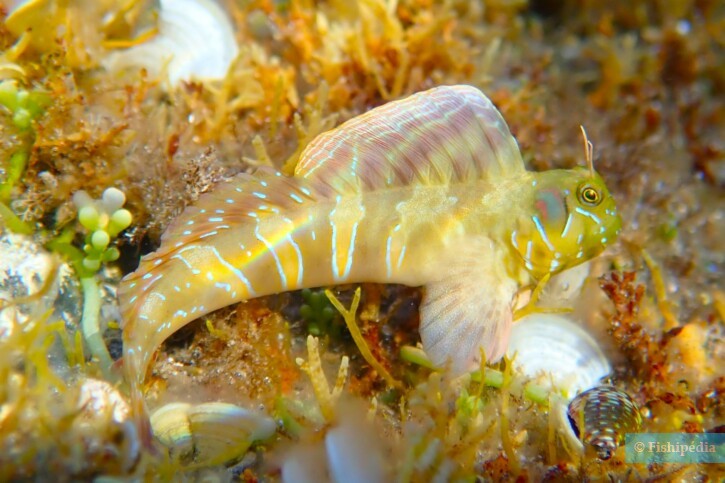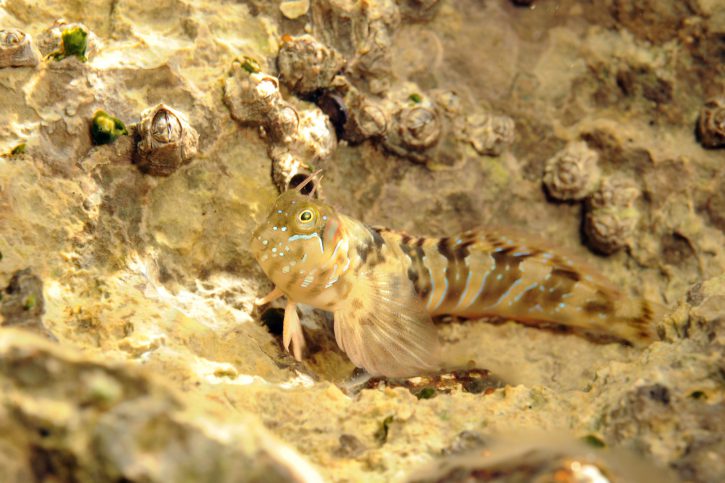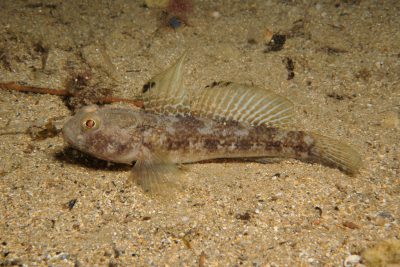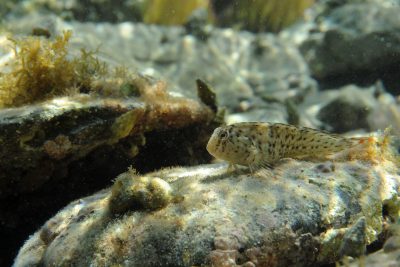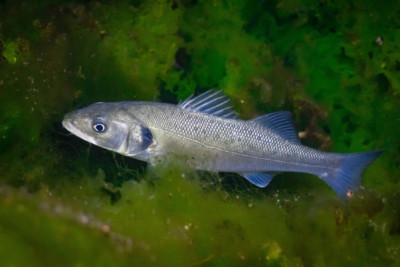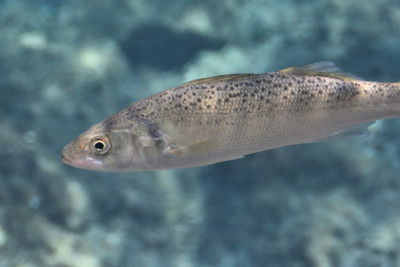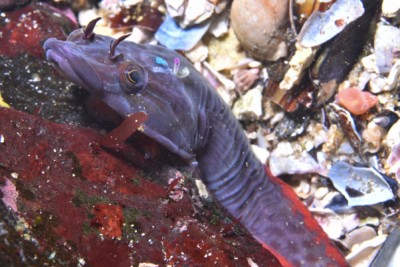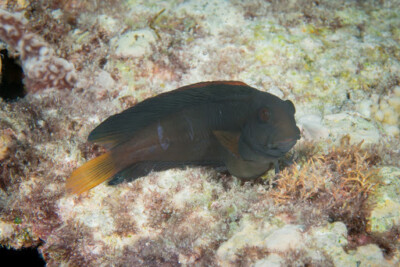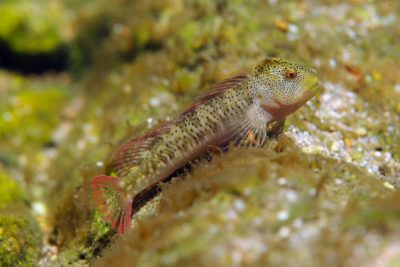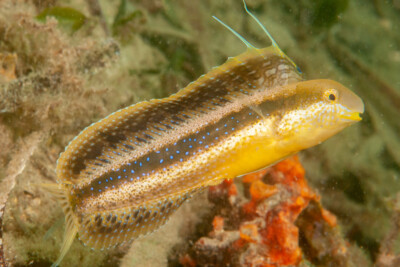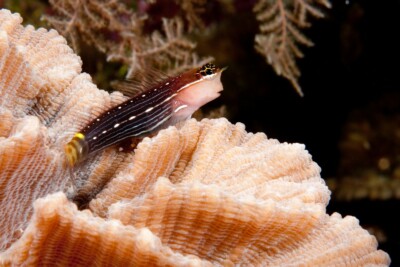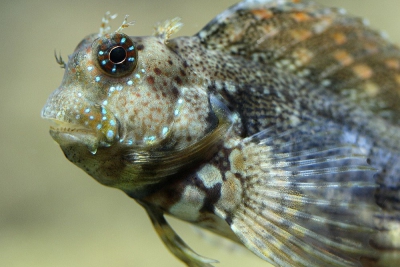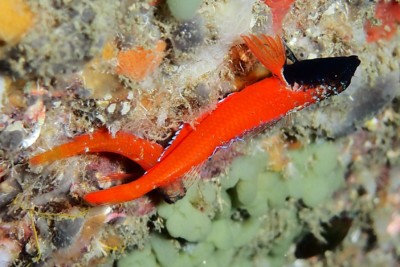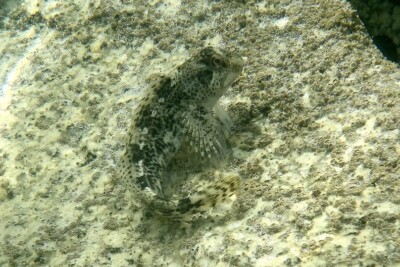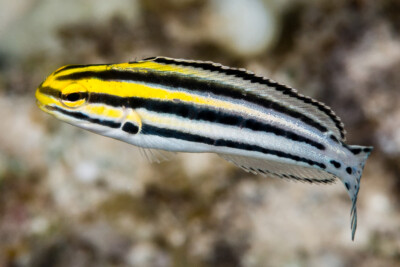blennie sphinx
| Scientific name | Aidablennius sphynx |
|---|---|
| Descriptor | Valencienne |
| Year of description | 1836 |
| IUCN category (World) | LC |
| Family | Blenniidae |
| Genus | Aidablennius |
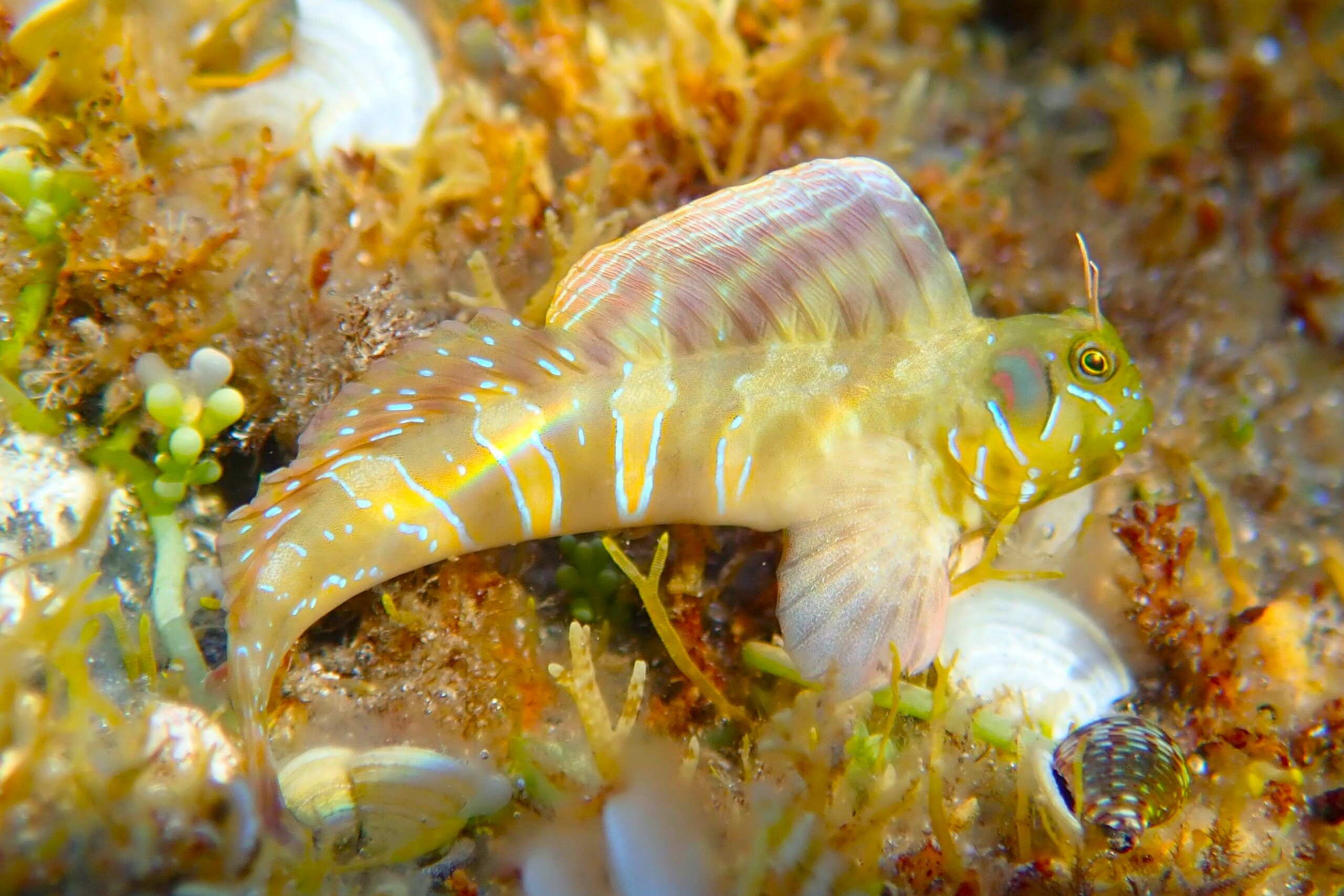

Introduction
The Sphinx blenny frequents shallow, wave-beaten areas from the Mediterranean Sea to the Black Sea.
Who is it?
Morphology
-
Average size6 cm
-
Maximum size8 cm
-
ShapeRectangular
-
Mimicrystone
-
Average size6 cm
-
Maximum size8 cm
-
ShapeRectangular
-
Mimicrystone
How to recognize This fish ?
The Sphinx blenny has an elongated, laterally compressed body, mostly brown and beige. Simple tentacles, slightly forward-facing, overhang the eyes. The body is barred with 5 to 7 more or less dark stripes bordered in blue.
This species has fine blue or white vertical bands on the cheeks and two bands forming a slightly backward-facing inverted V shape behind the eye. White patches with blue highlights dot the head.
The dorsal fin is dual and the pectoral fins are wide (about a quarter of the body).
Sexual dimorphism
The tentacles above the eyes are more prominent in males. In addition, males have a rectangular, bluish spot circled in red behind the eye.
Behaviour & Life cycle
-
dietomnivorous with alguivorous tendency
-
Sociabilitysolitary
-
territorialNo
-
Way of livingdiurnal
Solitary like other blennies, adults reside in rocky areas where they "graze" on algae and hunt small invertebrates. Juveniles prefer seagrass beds where they shelter from predators.
Reproduction
-
Reproductionovipare qui pond sur substrat caché
This oviparous fish reproduces when the water warms up in spring (March to June). Territorial males prepare a nest in which the female will lay eggs. The male then guards the eggs for about a month until they hatch.
Harmless species
This species poses no particular danger to humans in its natural habitat.
Origin and distribution
Geographic distribution & Conservation
It is found from the Eastern Atlantic from Morocco to the Mediterranean Sea and the Black Sea.
Conservation status of populations (IUCN)
What is its habitat?
Natural environment characteristics
-
Depth0 - 4 m
Biotope presentation
The Sphinx blenny is regularly seen near the shore. It can be easily spotted, especially in algae-rich areas. It inhabits rocky floors covered with algae and plant debris.
Species of the same biotope
Fishkeeping
Not recommended
We do not recommend keeping this species in an aquarium. It has unpredictable needs which, if not met, generate significant stress, potentially leading to a shorter life expectancy, an interruption of its growth or the development of pathogens.
To go further
Sources & Contributions
Participation & Validation
The Fishipedia team and specialist contributors are committed to providing high-quality content. However, although the information comes from scientific sources or testimonials from specialists, the cards may contain inaccuracies.

Adrien Falzon

Benoit Chartrer
Translation
Translation done with the valuable contribution of our translators, who make this information available to a wider audience. We sincerely thank them for their commitment.
Scientific partners
Tags
Species of the same family
Species of the same biotope
